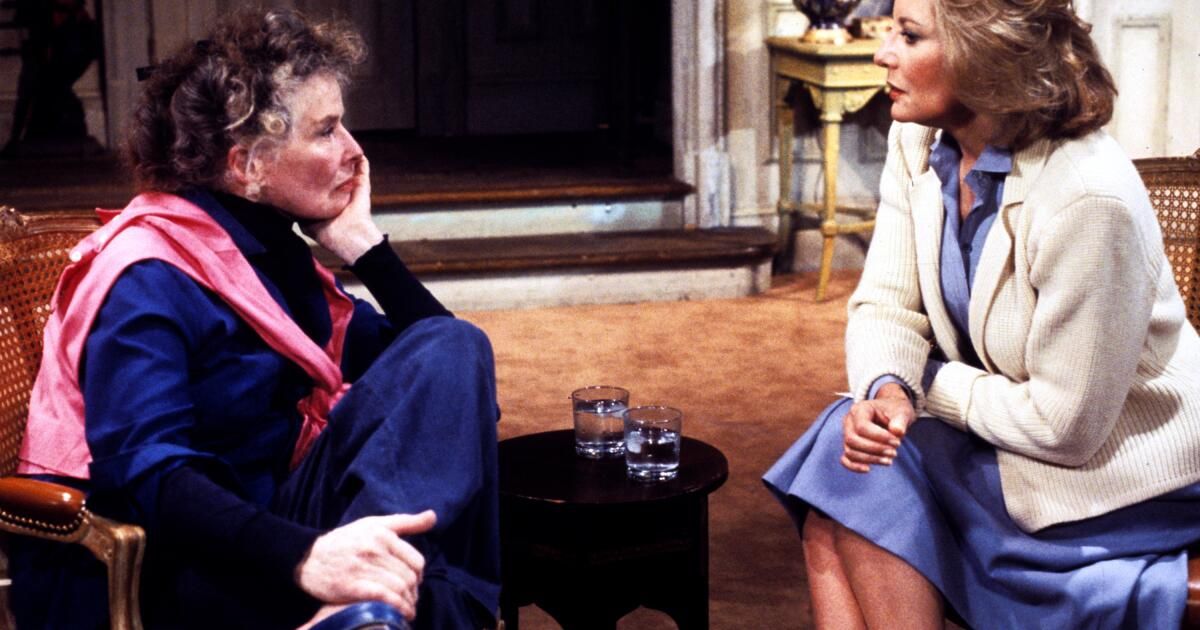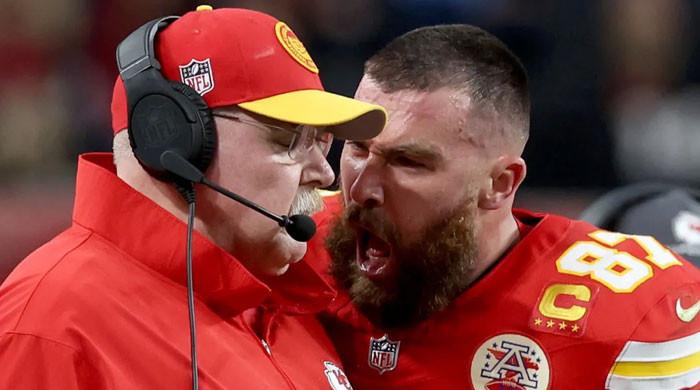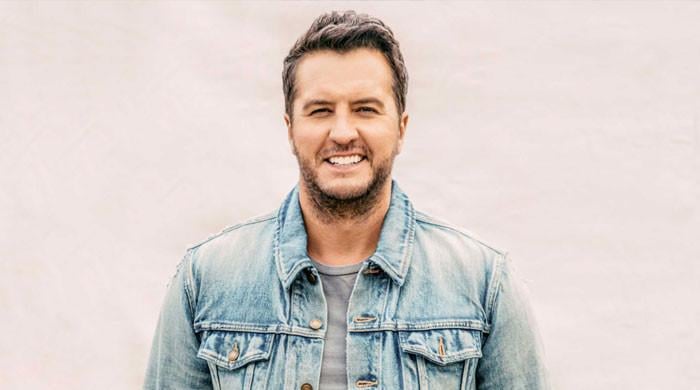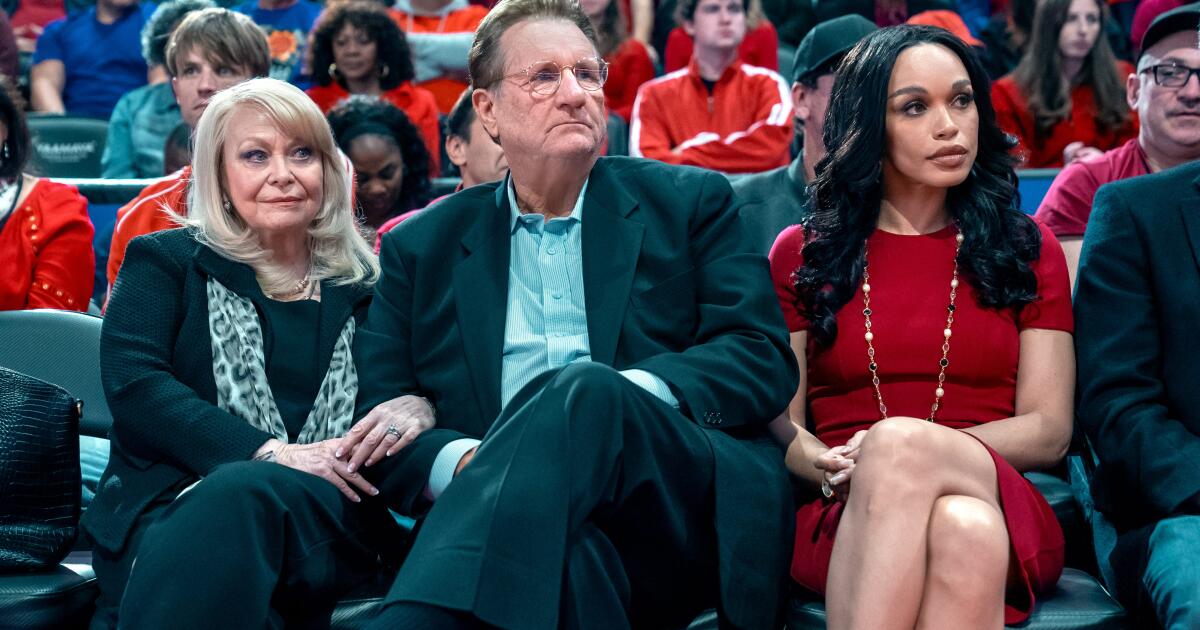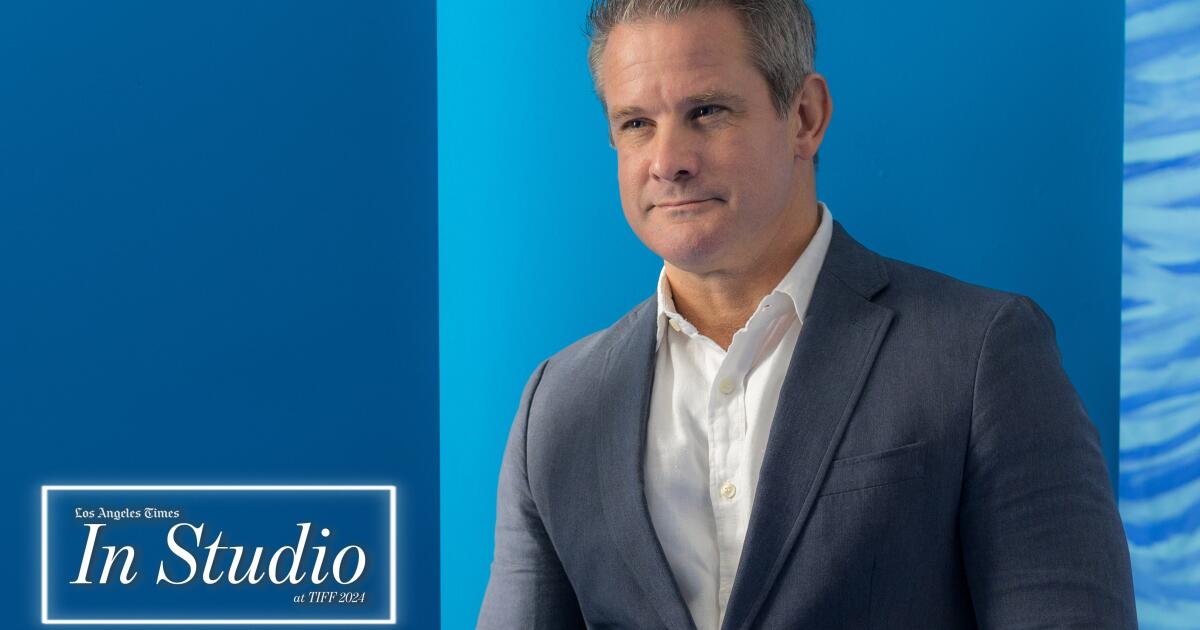There is not a single figure in the history of television whose longevity and influence coincide with Barbara Walters.
It became a “Today” NBC star in the early 1960s, raising the stature of the morning franchise. He opened Doors for Women as a presenter of the Network and converted the news interviews in the main television events: 74 million tuned in his sitting in 1999 with Monica Lewinsky. She created one of the oldest successes on daytime television with “The View”, which became an important forum for the country's political discourse.
“The size of the audience that Barbara was able to capture and harness has no comparison in today's world,” said Jackie Jesko, director of the new documentary “Barbara Walters: Tell Me EverytyThing”, debuting Monday in Hulu after its premiere at the Tribeca Film Festival earlier this month. “Everything he made made the difference.”
The characteristic of Jesko, produced by the Imagine documentaries of Brian Grazer and Ron Howard and ABC News Studios, is the first look in depth in the history of Walters. The film also serves as a historical review of the domain of the decades that made figures like Walters a culture guardian, as described by Jesko.
Before the advent of social networks and podcasts that allowed celebrities to control their messages, through the X -ray machine of a Barbara Walters interview he delivered large -scale exposure. David Sloan, an ABC news producer who worked with Walters, remembers how the images on the screen of his specials flanged through the windows of Manhattan Apartment Towers.
“Tell Me EveryThing” joined shortly after Walters died at the age of 93 in 2022. Sara Bernstein, president of Imagine's documentaries, approached Betsy West, executive producer and co -director of the documentary of Julia Child “Julia”, on assuming a Walters project. Sloan, who supervised a winning tax of the Emmy after Walters's death, also wanted a deeper exploration on the impact of his career. West, also a former Walters colleague, and Sloan became executive producers in the film. “Hell Me Everything” deeply takes advantage of ABC News files, which contain thousands of interviews that Walters did during their 40 years on the network.
Former President Richard M. Nixon during an interview with Barbara Walters in 1980 for ABC.
(Ray Stubblebine / AP)
Imagine not only to get access to the content of the program, but also to the shots that give parts of the film a look similar to Walters at work. The recently unearthed images provide some surreal moments, such as Walters, in a pink Chanel suit, exploring the damaged palace of the deposed leader of Libya Moammar Kadafi.
“The file gave us a perfect canvas to revive their scenes and moments,” said Bernstein.
The story of Walters also offers a guided tour on the path of obstacles that women faced in the first days of television news when it was dominated by patriarchy and personal importance. The reporters were relegated to writing soft characteristics and remained at a distance from the hard news. But Walters shattered those barriers through their sand and ingenuity. She worked as a writer on local television and a fashionable morning program of CBS before landing in “Today” of NBC in 1961. (“They needed someone who could hire cheap,” he said).
Walters went from the copy of the “Today Girl” program to make your own segments in the air, including a famous seductive report in a Fashion Parade in Paris and a day look in the life of being a playboy bunny. The most serious tasks came on their way.
The morning I saw the audience loved Walters even though he did not believe he was attractive enough to be in camera. His professional career was slowed only by male executives who were not willing to adopt the idea that a woman could be the face of a network news.

Harry reassolves with Barbara Walters during his first transmission as a co-presenter of ABC Evening News on October 4, 1976.
(Associated Press)
By 1971, Walters was the main attraction in “Today” when he sat next to the host Frank McGee every morning. But the same status was denied.
McGee, a respected journalist, with the behavior of a businessman from Undertaker companies, insisted on the management that asked the first three questions of any news topic that appeared in “Today” before Walters could have a chance.
The restriction led Walters to leave NBC studies to conduct interviews where their subjects lived or worked. The approach not only gave him the control of the conversations, but added a level of intimacy that the public was not reaching another part of television.
Walters had also written in his contract that if he ever left “today”, he would be promoted to the title of Coanfrerion. NBC Brass agreed the disposition, believing that McGee would not go anywhere.
But McGee suffered from bone cancer, which he had kept secret. He died in 1974 and Walters was elevated to Coanfrerion, making her the first woman to direct a newspaper news of the Network. (Or as Katie Couric frankly expresses it in the film, “he literally achieved it on Frank McGee's body.”
Walters made history again when he was caught by ABC News in 1976. He was given an annual salary of $ 1 million records to be the first co-presenter of a night news of the network, along with Harry Reason, a crispy and useless veteran. Walters was mistreated by his colleague and roasted by critics and competitors such as the commentator of CBS News Eric Sevareid, who, with disgust in his voice, described her as “a lady who reads the news.”
The nightly news experiment was a short -term disaster, but Walters found a supporter in Roone Arledge, the ABC sports businessman who took care of the news division and appreciated the show. He recognized Walters' strengths and turned it into an itinerant correspondent.
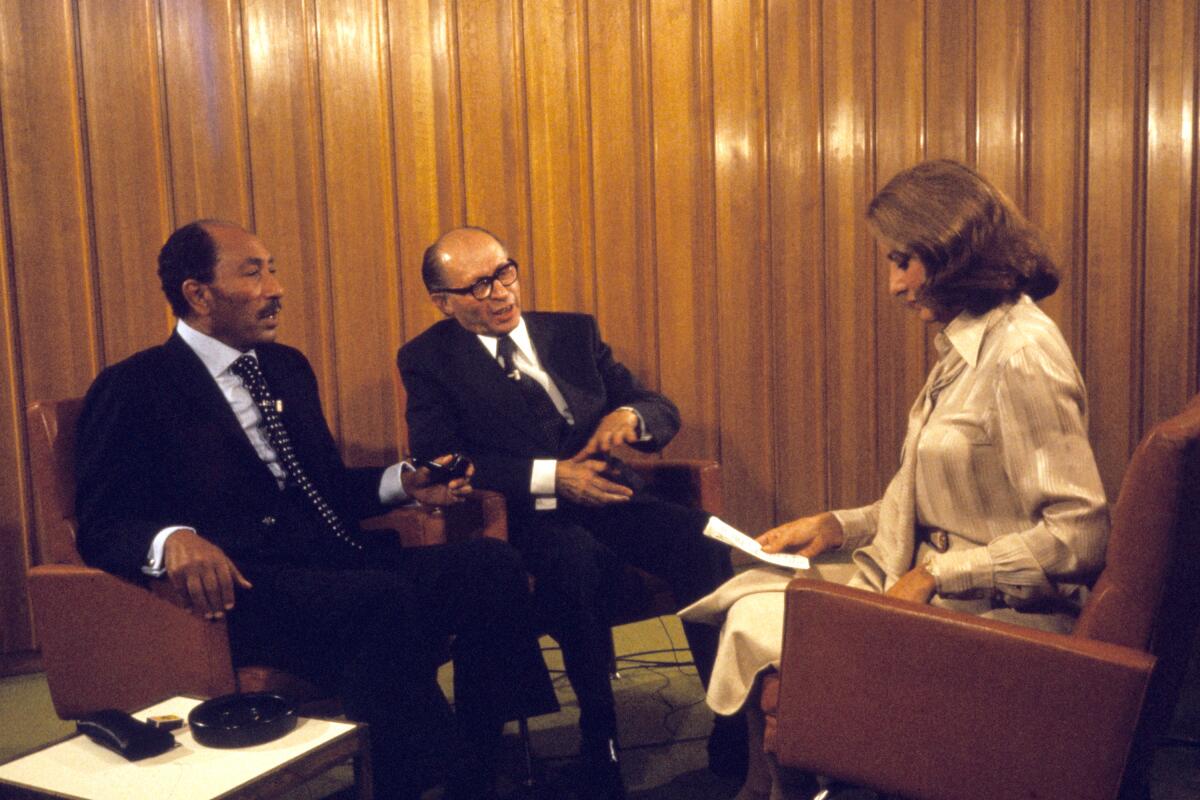
Barbara Walters organized a joint interview with the president of Egypt, Anwar Sadat, and Israel's prime minister, Menachem, began in 1977.
(ABC Photo Archives / Disney General Entertainment with)
Walters scored a great blow in 1977 when he was the first television journalist to speak together with Egyptian president Anwar Sadat and Israeli Prime Minister Menachem begin during Sadat's historical visit to Jerusalem.
“She was a family name in the Middle East,” Sloan said.
Over time, Walters would be known for their specials during stellar schedule, where long interviews with world leaders were broadcast adjacent to conversations with film stars. She could be a blunt interrogator in both kingdoms, asking Barbra Streisand why she chose not to fix her nose and former President Richard M. Nixon if she wanted to have burned the White House tapes that unbuttoned her presidency (“he should probably have done it”).
The news purists grabbed their pearls, but the audience received it. “I had a vision at that time that celebrities are news,” said Walt Disney Co. Bob Iger executive in the film. “I was practicing the art of journalism when I was interviewing them.”
The film explains how Walters developed an understanding of celebrities after growing around his father's nightclub, the Latin Quarter, a hot point in Boston. Sitting on the beams on the floor show, he observed how the public also responded.

Barbara Walters with Barbra Streisand, whom the journalist interviewed for a special in 1976.
(ABC Photo Archives / Disney General Entertainment with)
Although Walters programs obtained significant income for ABC News, it still had detractors, including the star presenter, Peter Jennings. A clip of the coverage of political conventions of the network in 1992 shows Jennings sinking its middle finger in it after an exchange in the air.
But Walters was unstoppable, already measured the eighties and nineties, became a confessor mother of the perpetrators and victims of the scandal. During a memorable meeting of the jail with the Menéndez brothers in which Eric describes himself as “normal children”, a stunned Walters replies: “Eric, you are a normal child who murdered his parents!”
As always, she was talking about the person who looked at home.
“She always wanted to ask the question that was leaking in the brain of someone who did not have the opportunity or was too afraid to ask,” said Meredith Kaulfers, executive vice president of Imagine Documentary.
Walters became a pioneer for women's stations for necessity. While he was 20 years old, his father's nightclub business collapsed and became the only source of financial support for his family, which included his disabled mentally disabled. The terror of the insecurity he felt during that period never left.
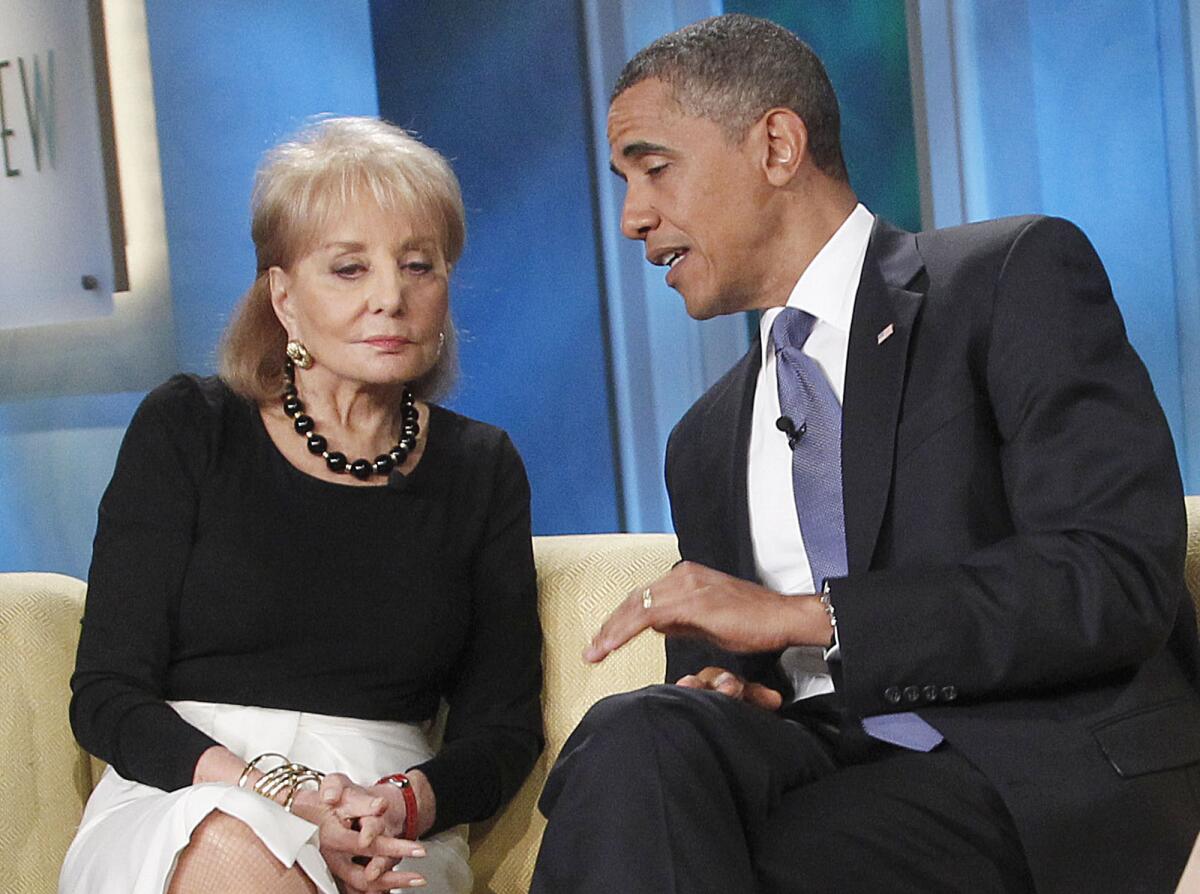
President Barack Obama talks to Barbara Walters during his guest appearance in “The View” of ABC in 2010.
(Pablo Martinez Monsivis / Associated Press)
“There was an instinct of survival in her that took her,” said Marcella Steingart, a film producer. “Not necessarily on purpose, but in its path, it opened doors for people.”
“Barbara Walters: Tell Me EveryThing” is not a hagiography. The film explores its tense relationship with its adopted daughter Jacqueline, who did not sit for an interview. Walters's unhealthy obsession with the colleague and rival Diane Sawyer is also covered, as well as his willingness to use the social connections he developed through his career, and not only to get great interviews.
Walters had a friendship with the unpleasant lawyer Roy Cohn, who took ropes so that his father's tax problems disappeared. She continued with a secret romance in the 1970s with an American married senator, Edward Brooke, while she was a fixed element in national political coverage.
While the film is based on interviews where Walters regrets not being able to have a successful career and a family life, Jesuso did not feel regrets. “I think if I could live your life again, nothing would change,” said Jesuso.

